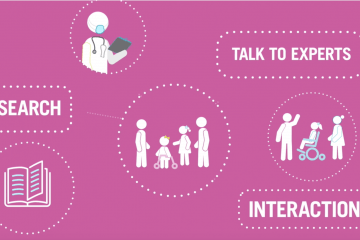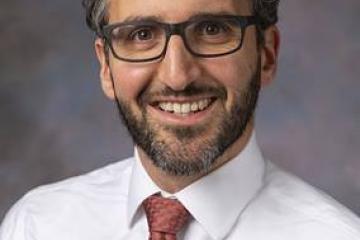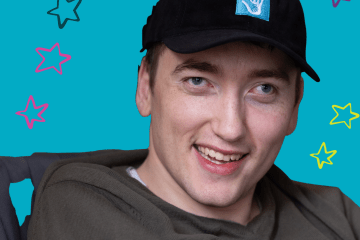Spine Development & Treatment
The spine is made up of many individual bones called vertebrae joined together by muscles and ligaments. Flat, soft discs separate and cushion the vertebrae from rubbing against each other. Because the vertebrae are separate, the spine is flexible and can bend. Together the vertebrae, discs, muscles, and ligaments make up the vertebral column or spine.
The sections of the spine have specific names.
- The cervical spine refers to the neck.
- The thoracic spine refers to the chest.
- The lumbar spine and sacral spine refer to the lower back.
As babies, children have a C-shaped spine. Secondary curves in the cervical and lumbar spine develop as infants become able to lift their heads, sit up, crawl, stand, and walk. As children grow, their spine continues to develop natural curves into a normal, mature shape.
In children with cerebral palsy, the spine sometimes doesn’t develop these curves because of abnormal muscle pull, weak muscles or asymmetrical muscles. In some cases, this can lead to spine deformity, things like scoliosis, side to side curvature, or kyphosis, where the spine goes outward to the back, or lordosis where the spine goes in toward the sternum. When those things happen and it interferes with function or causes pain, then we need to treat it. Kids with CP need to be watched very closely. The more involved the child, the closer we need to be watching with clinical evaluation and x-rays.
Once scoliosis is discovered, it needs to be treated. It will need to be evaluated and treated with physical therapy, perhaps with special seating or perhaps with a brace. And then if those things aren't working and the scoliosis is progressing, we need to think about surgery.
Once we've determined that surgery is necessary, we have a couple of options. In the younger child who really needs to continue growing, we have systems that include rods, and screws that will allow the spine to continue to get taller. This means that the child can continue to grow either by us putting a magnet over those rods in the office, or by returning to the OR for lengthening of the rod. As the kid gets closer to skeletal maturity we use rods and screws that are one size to get rid of the deformity, to maintain balanced posture of the spine and allow for sitting, standing, walking, and no concerns about future treatment of the scoliosis
Of course, not every CP child needs scoliosis surgery, but the few that do really need it. It prevents the complications of breathing and stomach . And in addition, it makes their lives better.
When spine surgery's recommended for your child with CP, it's a scary moment. You're going to focus on fears, on the fears of complications, on the fear about the pain your child is going to go through, and that's okay, but you also need to focus on the outcome. You need to understand that that child's going to be more comfortable and have a better quality of life.
"When spine surgery's recommended for your child with CP, it's a scary moment. You're going to focus on fears, on the fears of complications, on the fear about the pain your child is going to go through, and that's okay, but you also need to focus on the outcome."





